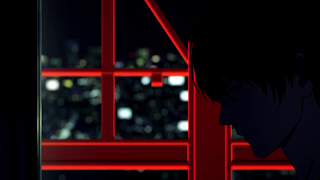This episode had a plethora of camera movements and editing techniques. In terms of editing there were dissolves, wipes, split screens, split screen wipes and match cuts. The camera movements were composed of pans, whip pans, tilts, shaky cam, erratic zooms and parallax effect . The camera work lacked movement in the z-axis but the variety mixed with the snappy editing gave the episode a dynamic look. For the most part the stylish camera work and editing worked well in conjunction and maintained continuity. Although, there were actually too much going on that it made it hard to take in the scenes and pin point anything to talk about. Also, some of the dissolves were way too slow and visually distracting. Some of the split screens resulted in sloppy framing and the point of interest being partially obstructed. Despite some faults, all in all the direction in this episode was interesting. The most interesting part was the clever use of formulaic sequence of shots for the testimon






